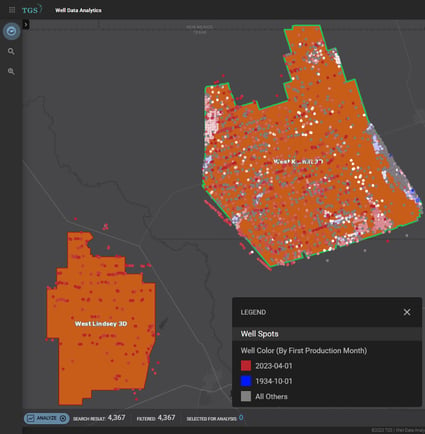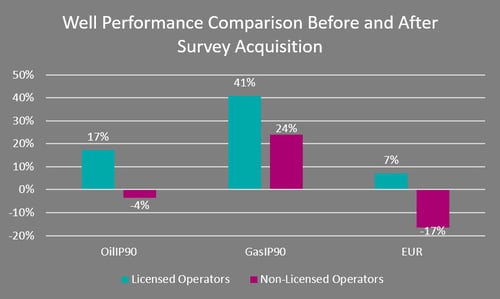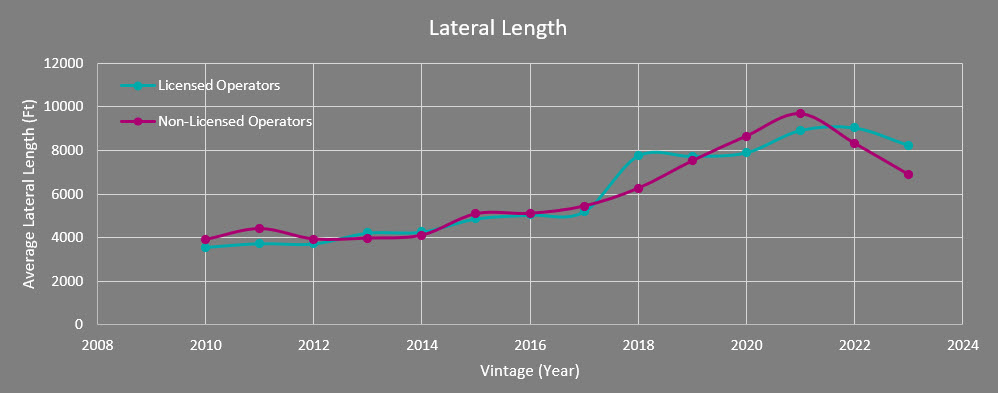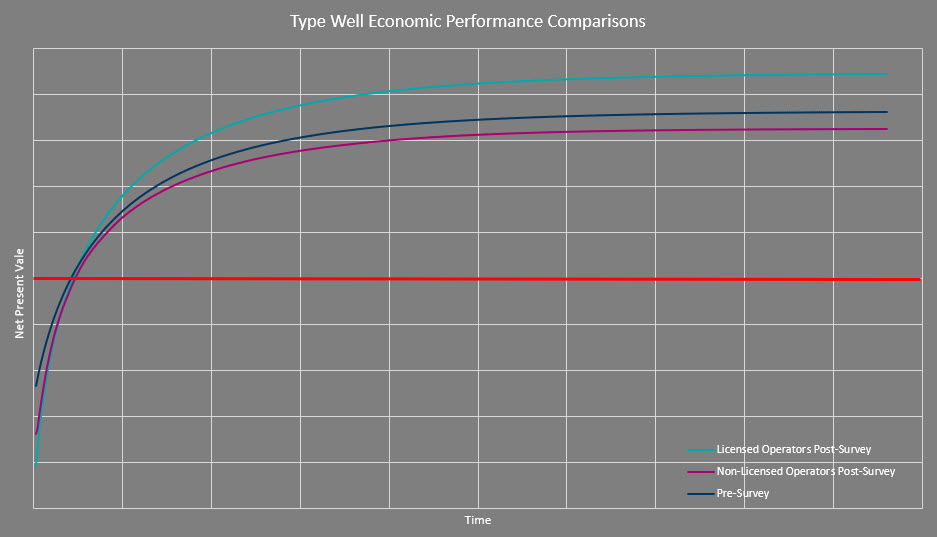A Case Study Benchmarking Well Performance Enhancements due to 3D Seismic Licensing
On the eve of the 100-year anniversary of commercial field development in the Permian Basin we conducted a case study using TGS Well Data Analytics to evaluate the impact of utilizing seismic in stacked play unconventional development scenarios. Specifically, the question we tried to answer is: Can we quantify the value of modern high-resolution 3D seismic by identifying changes in drilling programs attributable to knowledge gained from the West Kermit 3D and West Lindsey 3D surveys in the Delaware Basin (Figure 1)?

Figure 1 – Study Area
To answer this question, we benchmarked wells drilled by operators who did and did not license the surveys, both before and after the acquisition of the surveys, and evaluated well performance, landing zone targets, completion design, and economic performance. The results show that operators who licensed the surveys drilled higher performing wells (Figure 2), targeted smaller, more productive landing zones (Figure 3), did not differ significantly from peers in completion design (Figure 4), and ultimately achieved higher economic returns on investment (Figure 5).

Figure 2 – Operator Well Performance Comparison
.png?width=424&height=317&name=MicrosoftTeams-image%20(17).png)
Figure 3 – Licensee Gun Barrel Type-Well Spacing

Figure 4 – Operator Completion Design Comparison

Figure 5 – Operator Type-Well Economic Comparison
To learn more about the methodology and results you can read the full article here.
For more information on Well Data Analytics or to schedule a demo, contact us at WDPSales@tgs.com.


